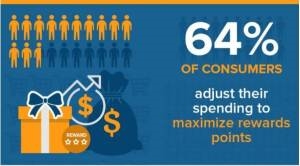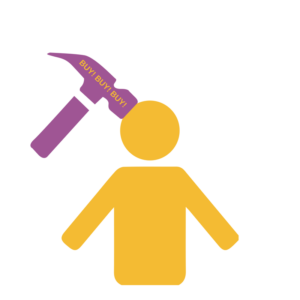Now that we’re 1.5 years into the Covid-19 pandemic, we can look back at our lives and see that some of the practices adopted during lockdowns have already become ingrained into our lifestyles and reshaped our long-standing views on work and leisure seemingly forever. While daily sourdough baking and zoom boozing may have lost their quarantine charm (at least from what we gather), our home office routines are just as permanent as the lingering smell of hand sanitizer. Working from the comfort of one’s home and, alas, with all the strains of self-employment, has passed the experimental stage and become the new norm in almost no time. Now that the world economies are reopening and some employers are trying to get back to the pre-pandemic work arrangements, many professionals (and businesses too) have appreciated the benefits of freelance work and are unwilling to give them up. It looks like it’s time for us to embrace the change and try to make the most of it.
How it started
During the pre-pandemic times, freelancing was more a matter of choice. People opted for it if they felt a need for greater flexibility: stay-at-home mums, travelers, professionals who did not want to be tethered to just one company — these were the major groups of independent workers who would choose freelance jobs over the confines of the 9 to 5 office routine. Quite often, freelancing was taken up by students or those in-between jobs as a means to earn a basic income without taking too much focus off the main priorities. Others would occasionally do freelance gigs to diversify their incomes in addition to working as full-time employees. However, in most cases, freelancing was seen as a temporary measure due to lack of security as opposed to traditional employment.
How it’s going
The COVID-19 pandemic came as a great disruption to the labor markets across the world. Millions of people were furloughed or lost their jobs altogether because of a volatile mix of economic factors and strict social distancing measures. The lucky ones who did not get laid off had to quickly adjust to working from home while their offices were on hold. Many other workers who were deemed essential and continued working in hospitals, grocery stores, warehouses, etc., faced severe challenges with the ever-growing workload and adoption of new protocols that helped reduce the spread of coronavirus. In this state of uncertainty and chaos, many people flooded gig job platforms to try their luck at freelance. Some of them, especially millennials and Gen Z, eventually found the gig economy more rewarding than regular employment.
Here’s a typical story of a UX designer in 2021 who switched to freelance out of necessity rather than choice but eventually found more comfort in taking up gigs than getting back to a ‘normal’ full-time job:
‘I had been working for a medium-sized company for three and a half years when the pandemic hit. I was a reliable employee, and I felt pretty secure in my job until I found myself in this Wile E. Coyote situation: no matter how hard I worked, I did not survive the major layoff that happened just two weeks into the lockdown. I had no other ideas but to search for some gigs on Upwork. Luckily, I had had some experience with this platform before, so I landed my first project within a week. Later, while casually browsing some job openings, I realized that I’d rather never work for someone again. What’s the point if no employer can guarantee the security I need anyway?”
Without a doubt, the traditional employment schemes became obsolete quite a while ago. The pandemic only catalyzed the inevitable changes that were budding to the surface. Nowadays, people want more flexibility and control over their work-life. They want to be able to tread their career paths in their own unique ways. Along with that, after several economic crises, including the 2008 recession and the Covid-19 crisis, many workers have been losing trust in the social contract for employment as it is obviously not functioning properly anymore. According to major research by Upwork, one of the biggest freelance work marketplaces, 20% of employed Americans, which amounts to 10 million workers, consider freelance work as an alternative to full-time employment.
The future is freelance?
The younger generation of the workforce has a different view on what it takes to build a career. They no longer believe in working their way up in a single company as it looks way too risky. Instead, they put much more value on their skill set and experience as the only true security source. The pandemic labor market situation has made us re-evaluate our approach to work. Together with the challenges brought about by the deep change in the whole arrangement, we have an unprecedented opportunity to build a healthier relationship with our work.
Of course, it would be naive to expect the demand for freelance workers to be growing steadily regardless of the sphere. The innate diversity of the freelance workforce already implies that the pandemic would affect it in different ways. For example, while social distancing precautions may decrease the demand for Uber drivers and freelance beauty therapists, these very measures will spawn more food and groceries delivery jobs.
What’s in it for business?
Just like many workers have opted out of the traditional employment model in favor of the gig economy, businesses have also preferred outsourcing some of their operations to freelancers or independent contract workers rather than hiring full-time employees.
Among the obvious benefits are the reduced costs as you only pay for the time the freelancer spent solving your problem. Secondly, gig workers are more motivated to work efficiently and quickly as they move from project to project. Moreover, you do not have to cover additional expenses, such as office rent or employee health insurance. According to a McKinsey survey of 278 executives carried out in August 2020, on average, companies were planning to reduce their office space by 30% as some of their functions were successfully performed by remote workers or even outsourced to freelancers.
We at Lemon.io have practiced this work arrangement first hand. Along with working in the vetted freelance niche and matching startups with freelance talent, we outsource a lot of our operations to independent contractors. This way, we can enjoy the flexibility we need and collaborate with the best professionals in the field even though we may not yet afford to hire them full-time.
However, businesses are still in the very early stages of the adoption of freelancers across the economy. The shortcomings of cooperation with freelancers, such as lack of commitment and security issues, prevent companies from realizing the full economic potential offered by the gig workforce. At the moment, companies are mostly using this virtual talent bench to augment their full-time teams at times of overload, flexing up and down when the need arises.
With the growing popularity of freelance, we need to move away from the old models of outsourcing the work previously done in-house. Instead, businesses have a great opportunity to reconsider their existing business models to make them more suitable to the talent-fluid culture.
Freelance: Surviving? Thriving!
If you are willing to join the gig economy, you should be ready to pluck up your resilience and overcome the pitfalls awaiting each freelancer at the start of their career. Before you cut ties with traditional employment and go on a free ride without the comforting support of employer health insurance benefits, paid vacation, and a steady paycheck, think of the reasons why you would like to choose this wild but exciting path. Maybe it’s for the flexibility and the freedom to work from roughly anywhere or, perhaps, for the autonomy and the opportunity to make your own decisions. Whatever the reasons are, being conscious of your true motivation will keep you afloat when things get tough.
You will have to boost your negotiation skills as you will negotiate everything: from rates to terms of cooperation and deadlines.
With freelance, it is always either flood or famine. You may find yourself bouncing desperately between periods of extreme work overload and occasional dry spells. To balance your workflow and avoid freelance burnout, make it a habit to always look out for upcoming projects. Don’t hesitate to outsource some of the workload to have a chance to focus on what you do best. For example, you may decide to hire an accountant to manage your taxes or a personal assistant to help you with some essential tasks.
Undoubtedly, the pandemic has put a lot of strain on our ability to maintain professional networks. However, it’s time to try to connect with people who could help you shape your career path. Join professional communities, set up accounts with several freelance hiring platforms, attend workshops, reach out to people you previously worked with, and let them know you are available for freelance projects.
This all might look rather overwhelming as you basically have to be your own boss and marketing manager in addition to completing tasks within your expertise. We all know that ‘freelance’ is derived from ‘freedom’, and freedom always comes with responsibility. But at the same time, it will give you independence and a good reason to trust your new employer.
Business & Finance Articles on Business 2 Community
(39)






